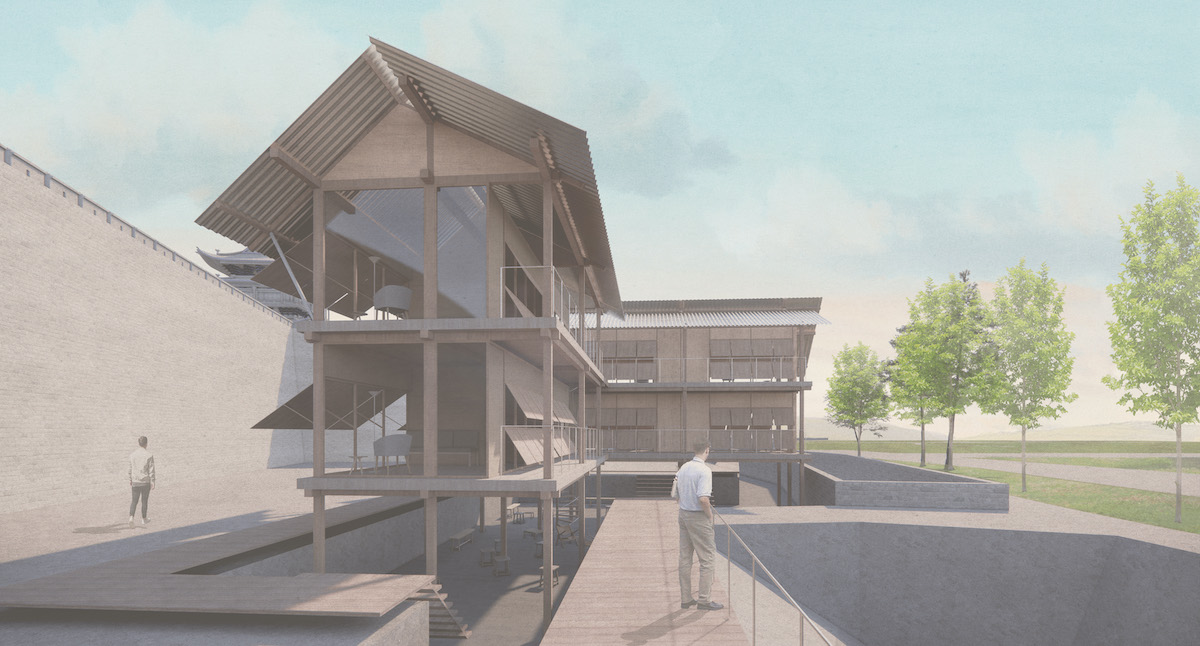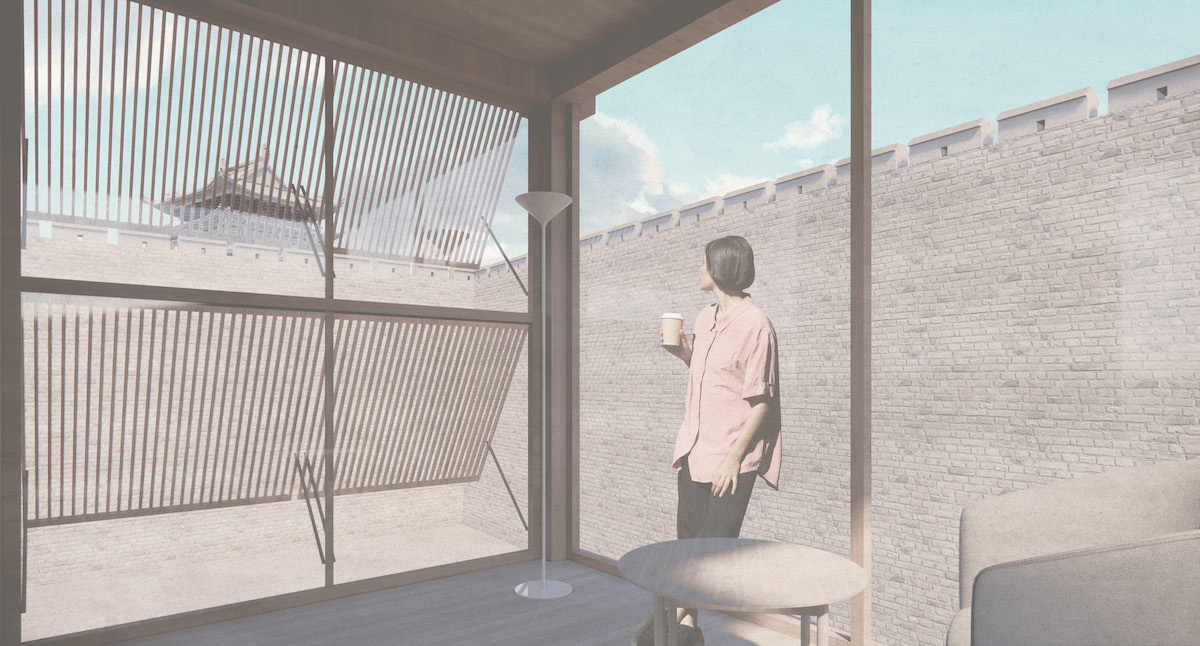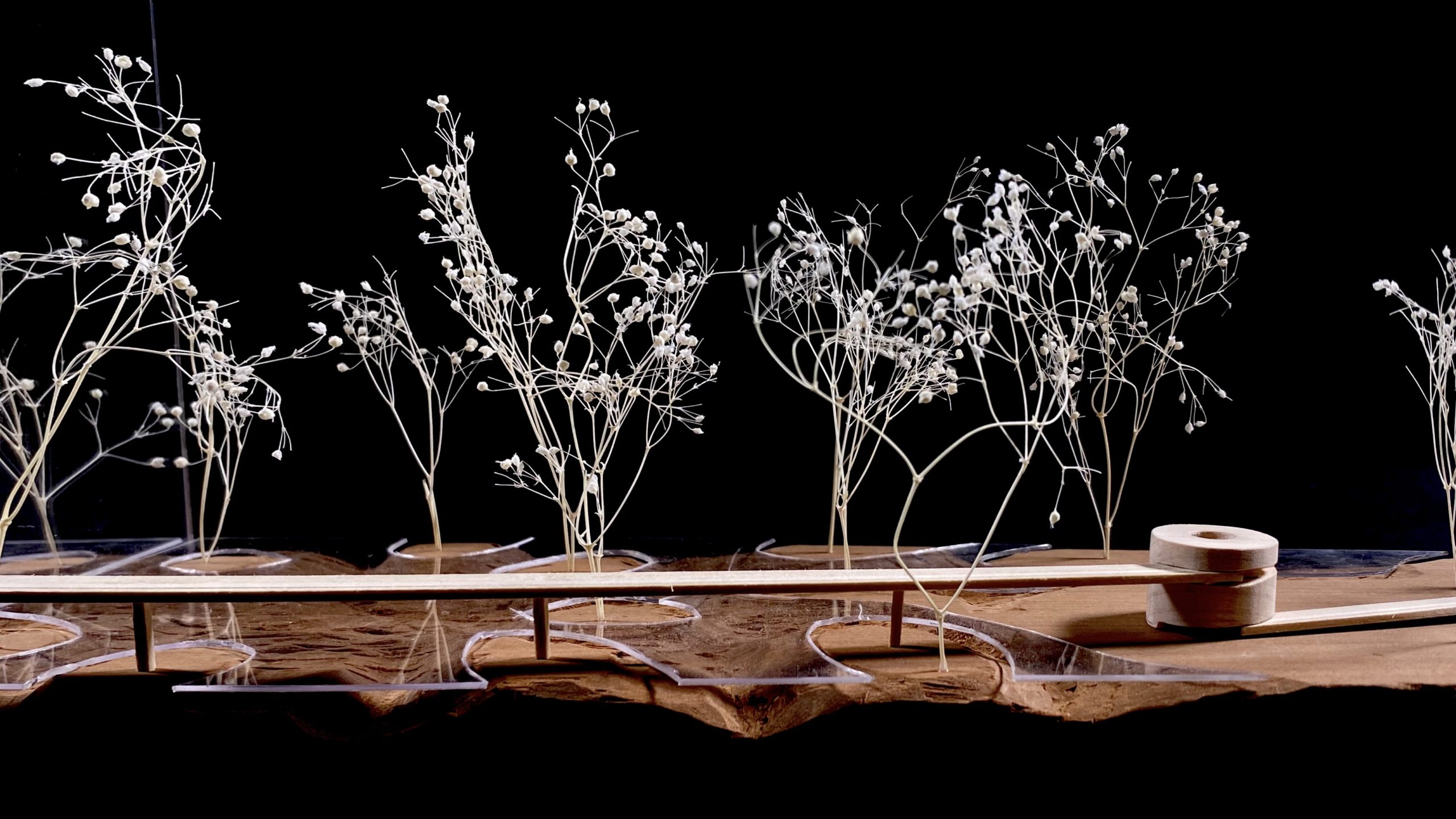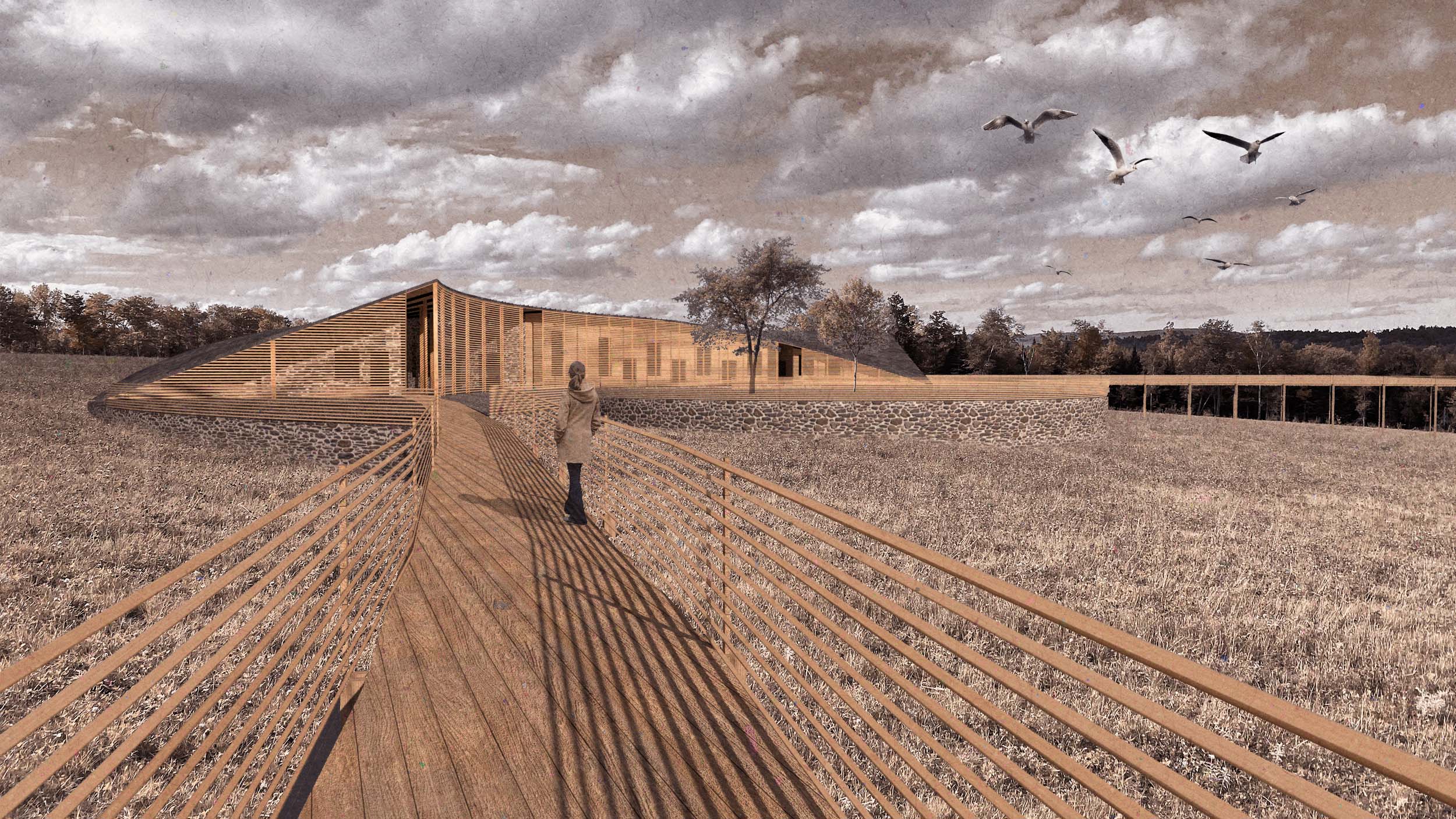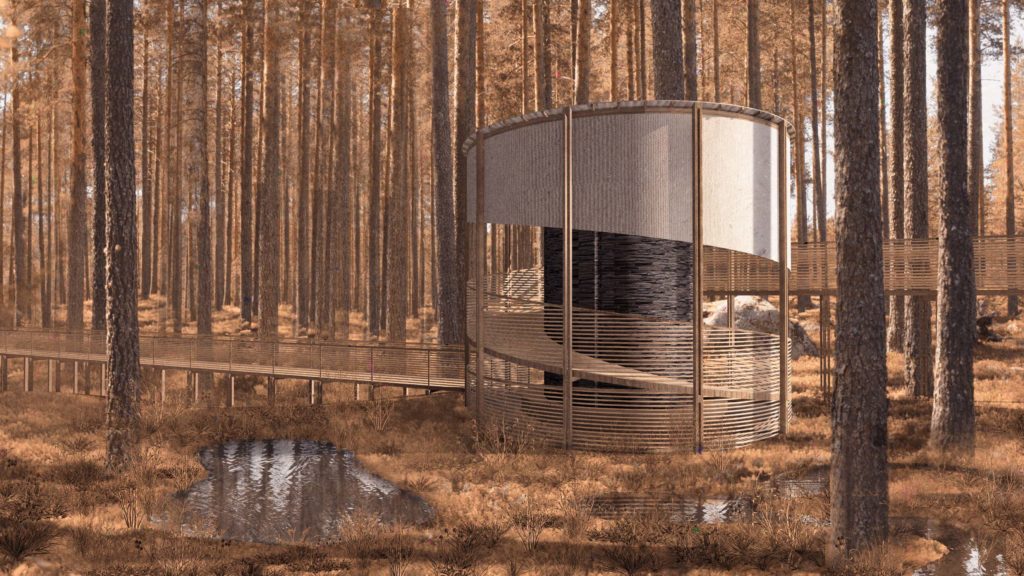
Many of us have spent the past months yearning to travel, but we’ve also had time to reflect on our collective travel habits. Businesses won’t be eager to resume flying after successfully shifting meetings online, and that will be a good thing when it comes to carbon emissions. As for leisure travel, increased engagement with our local environs will probably have led many of us to question what tourism is for. If the global tourist economy is going to ratchet back into high gear, how can it be done more sustainably, with greater understanding of cultural diversity, and with fewer negative impacts on sought-after sites? This semester at the Harvard GSD, studios in architecture and urban planning led by Toshiko Mori, Lyndon Neri and Rossana Hu, and Daniel D’Oca explored these questions both directly and indirectly. All four professors are wary of tourism even as they acknowledge its seemingly inextricable role in so many aspects of our lives.
I caught up with Lyndon Neri and Rossana Hu via videoconference in Shanghai, where they’ve been for most of the pandemic. Neri and Hu are the John C. Portman Design Critics in Architecture and co-founders of Shanghai-based Neri&Hu. Like most of us, their travel has been significantly curtailed these past months, and what tourism they’ve engaged in has been mainly within China. Hu observes that, with few options for traveling abroad, “People are just restless, so they’ve started traveling inland to visit cultural landmarks. I feel like everyone I know in Shanghai has gone this past year to Jingdezhen, the ceramics town.” Neri also notes “a conscious effort to travel within China and understand all the great places in this country.”
Tourism within China has been facilitated by a boom in infrastructure development, much of it built as part of the so-called Belt and Road Initiative that began in 2013. (The “belt” refers to the Silk Road Economic Belt and “road” to the 21st Century Maritime Silk Road—these are the land-based and sea-based parts of the initiative.) Transportation infrastructure of all types has been rapidly modernized. “The extension of major roadways has meant that places that would have taken you days to get there now take hours,” Neri says. “Before the train that takes 40 minutes from Shanghai to Hangzhou, it used to take three-and-a-half hours by car.” This increase in speed has “definitely increased tourism to places that would not have been easily accessible.”
How do you bring about an authentic connection to culture? How do you bring people together rather than isolating everyone? How do you prevent experience from being entirely commercialized?
Rossana Hu
A particular type of cultural tourism in China has grown dramatically as a result of this intensification of speed and accessibility. Imagine staged scenes of farmers leading cattle across picturesque bridges—with rows of tourists lined up in the right spot to catch the perfect photo. Neri describes how “developers have picked up on the idea that if you add culture to a common itinerary for tourists, it adds value.” This cold economic logic raises questions: “How do you bring about an authentic connection to culture?” Hu asks. “How do you bring people together rather than isolating everyone? How do you prevent experience from being entirely commercialized?”
Neri and Hu’s studio, “De/constructing Cultural Tourism,” looks at these questions as the impetus to exploring ways of creating more meaningful engagement with tourist sites. The problem they pose begins with John Ruskin, the 19th-century architecture theorist and philosopher of travel. Neri recites a famous Ruskin quote, which acts as a riddle: “I would rather teach drawing that my pupils may learn to love nature, than teach the looking at nature that they may learn to draw.” Neri explains that, “For Ruskin, drawing is the catalyst to seeing and understanding the things around us. In Ruskin’s argument, when we see something beautiful, our natural tendency is to want to possess it. But if we don’t understand it, the possession is meaningless.” Generating such understanding is difficult, Hu says: “The state of our contemporary reality involves taking out your iPhone to photograph something rather than sitting there and spending the time to sketch out a building. Nobody really writes in journals anymore. They just take films of themselves that go into the cloud, and they never have time to look at them again.”
The studio’s two locations are UNESCO-listed heritage sites, Ping Yao and the Mogao Caves at Dunhuang. The latter is a Buddhist sanctuary first constructed in 366 AD and located at a strategic point along the Silk Road, and the former is an “exceptionally well-preserved example of a traditional Han Chinese city, founded in the 14th century.” [1] These are among the most visited tourist sites in China, and thus are more likely to become checkboxes on itineraries than places for thoughtful engagement.
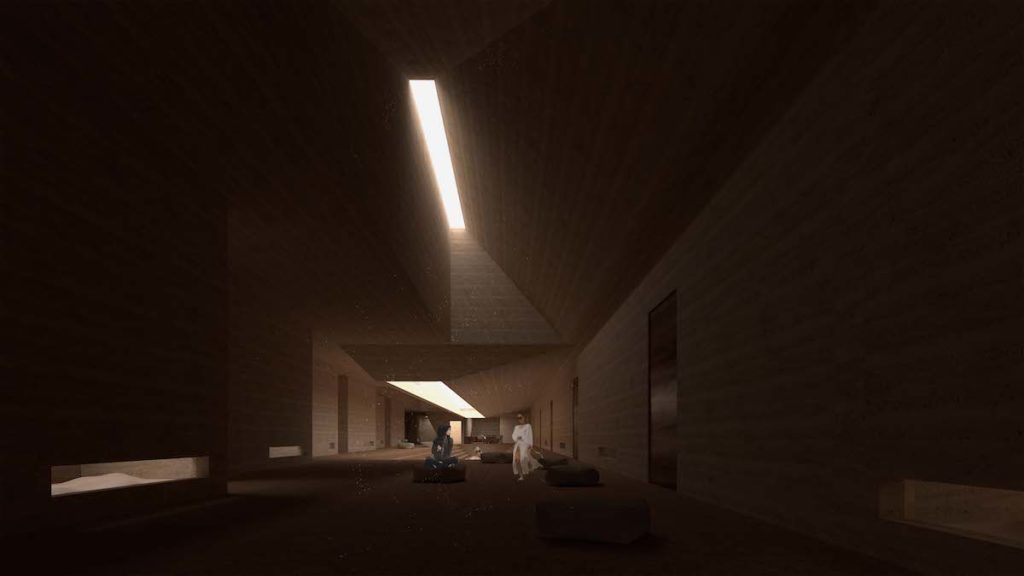
The studio focuses on a particular building type, the kezhan, or travelers’ rest stop. Neri describes one elaborate architectural form that serves as a precedent: “The typology of the caravanserai from the Middle East actually came to China along the Silk Road and became a different form,” he says. “It’s a city in itself. It’s usually round, very much like the famous Tulou in Fujian province, except much bigger. There are buildings inside—it’s a bazaar—and there’s always a hotel component. It’s a place where people come in and not only are they resting, but they’re also trading. It’s also a place of business, a safe environment.” Taking time is a key aspect of the architecture. “The longer you’re there, the more you come to know the inner circle of who’s actually in charge of the place,” Neri says. “It’s not just about fast transactions. It’s about layering. It’s also about hierarchy and vertical relationships. People sleep above and do their commercial activities on the ground floor.” The external orientation is equally nuanced. “Ultimately, our goal is for you to understand all the things around it,” Hu says. “There’s a lot of architectural strategy that students can use: framing views, staging interactions, opening up the layers of culture.”
Neri and Hu’s studio may ultimately provoke more questions than it answers. “The best part of the studio is that no one is traveling, so everyone is itchy to embark on that first trip after things open up,” Hu says. “The studio is like a rest stop for the students as well.”
Daniel D’Oca’s studio, “Highways Revisited,” focuses on a slice of American urban history that at first glance has little to do with tourism. D’Oca is an associate professor in practice of urban planning and co-founder of the New York–based firm Interboro Partners, and I talked to him while he was on the road. His studio zeroes in on the local impacts of America’s interstate highway system, which was expanded dramatically beginning with the Federal Aid Highway Act of 1956. The changes brought about by the act were enormous, including an explosion of suburban growth, the emptying of downtowns, and the solidification of automobile culture in the American psyche. Many freeways were routed through low-income minority neighborhoods, changing them profoundly, usually in negative ways. Examples are scattered across the country. D’Oca lists a couple his studio has investigated: “In Detroit, a highway was routed through Black Bottom, a Black neighborhood, more or less destroying it,” he says. “We’re also looking at a situation in El Paso where the fight is not whether to remove a highway, but whether or not to expand it beyond its current sixteen lanes.”
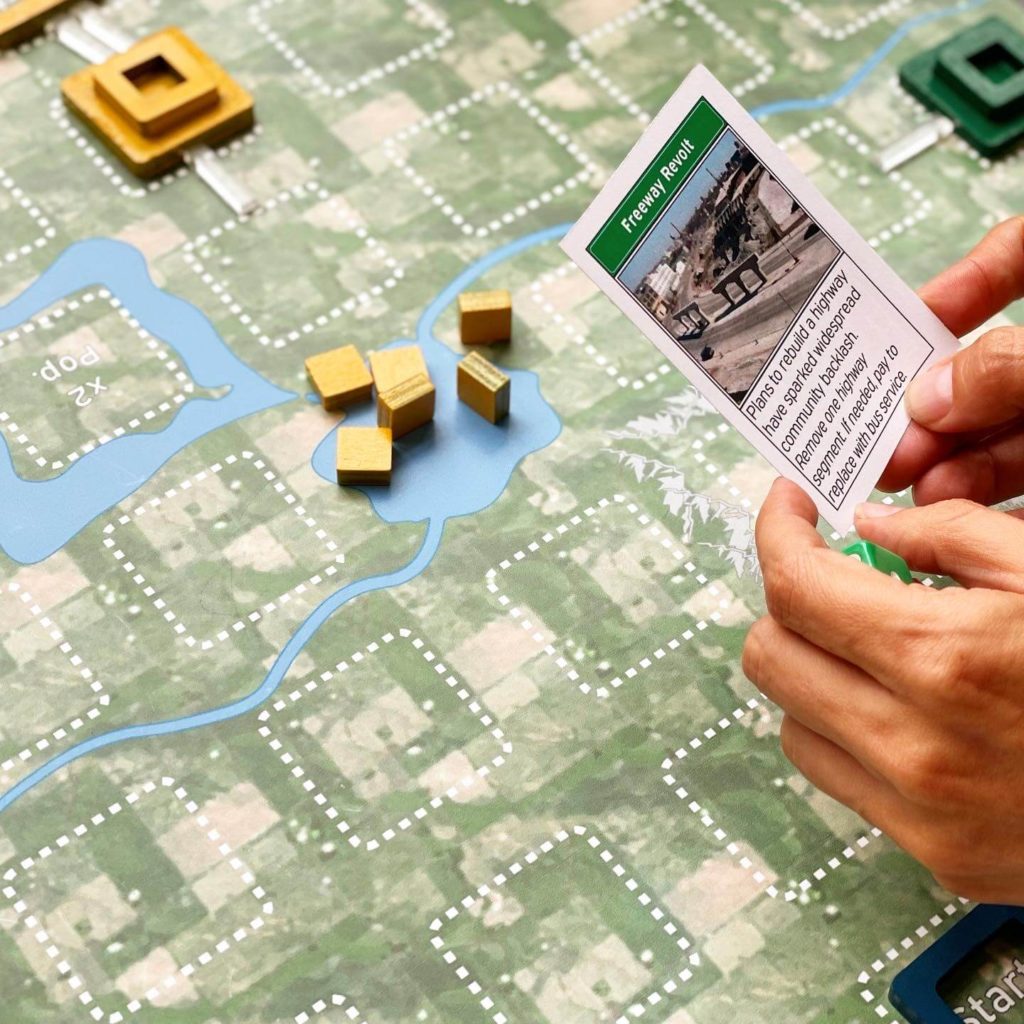
Tourism is not the most pressing issue in these neighborhoods, but it is an inextricable component of the urban dynamics the studio is considering. “The communities we’re working on care primarily about housing, stability, and quality of life issues,” D’Oca says, “but I suspect that tourism would be a desirable feature of a lot of these plans, as long as it turns out equitably.” One way tourism might help is by providing a boost to local economies. Take the Greenwood neighborhood in Tulsa. “This was a thriving Black neighborhood—it was called Black Wall Street—and it was the site of a massacre in the 1920s, an unspeakable tragedy. The second tragedy was the highway, which went right through the neighborhood when it was rebuilding itself,” D’Oca says. “You have a lot of efforts now to remember the past as part of revitalizing this community and others like it—both past tragedies and the history of when it was thriving. I suspect they want tourists, and tourists might want to see the history of Black Wall Street.”
There is a serious conflict between what the community needs and the effects of tourism.
Although tourism can bring a welcome influx of people, it has the potential to overwhelm. This is perhaps nowhere more evident than in New Orleans, where the Claiborne Expressway runs through the Tremé neighborhood. “You can imagine that if the freeway comes down, the neighborhood will be more desirable, and there will be a feeding frenzy with speculators buying up shopfront houses and turning them into Airbnb rentals,” D’Oca says. “Nobody in the community wants that. There is a serious conflict between what the community needs and the effects of tourism.” D’Oca advises that planners should take care when unleashing the force of tourism. “New Orleans is a cautionary tale,” he says. “The city has been eaten alive by Airbnb speculation. Entire neighborhoods have been bought up by speculators who turn houses into short term rentals. In the Tremé, it is the freeway that is keeping property values low. Fighting for the freeway to come down is only half the battle. The real battle is to make sure there’s an equitable plan for when it does come down.”
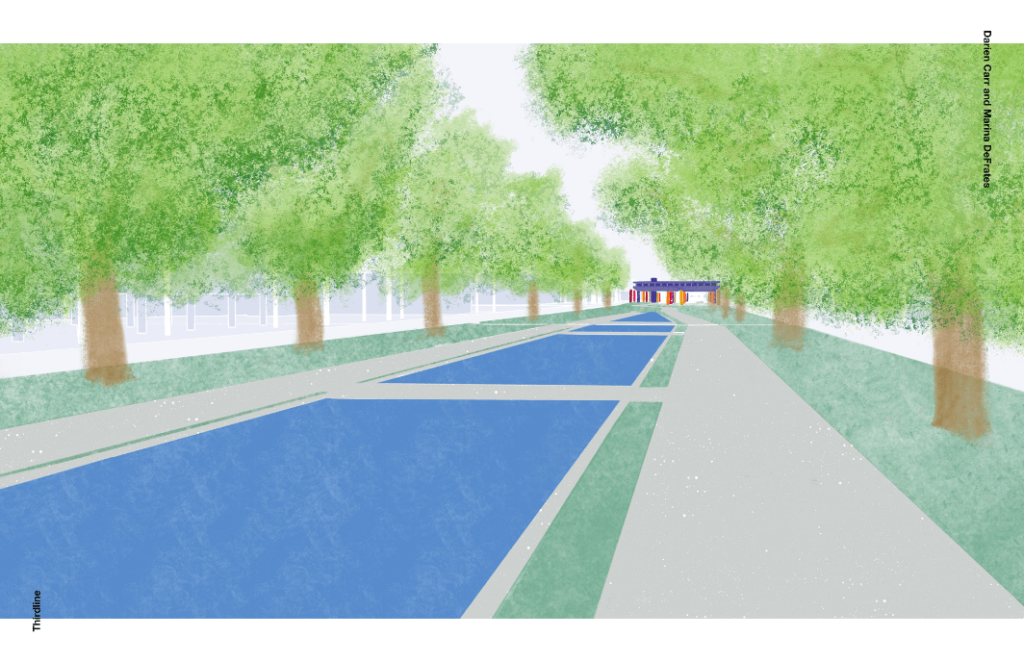
Another tricky question: What happens when tourists stay? D’Oca has noticed that “something interesting has happened in the pandemic” in the small town in upstate New York where he lives. “Some people have moved here as remote work has become more plausible, and a lot of people are buying up second homes to get out of the city. I guess it’s a form of tourism—these are people who aren’t moving here but all of a sudden have houses here.” This has created cultural conflict. D’Oca continues: “It becomes a different vision of what the place should be, and sometimes it’s a zero-sum game. For example, if this is your second home, you don’t want to see growth; you want it to remain a 19th-century pre-industrial hamlet. But a lot of other people don’t have the luxury for their hometown to be that. They need jobs, they need housing.”
D’Oca describes a scene that has played out in similar small towns across America: “In a neighboring town there was a huge fight over a dollar store,” he says. “It was basically local people against weekenders. Some people thought it was the apocalypse—a dollar store coming to town. People like us need to check our class privilege. It’s about the image of the place: whether it will remain an agrarian landscape with hardly any houses in it, or somewhere more livable for working-class people.”
Among the lessons of D’Oca’s studio is how tourism can shade into gentrification. “The connection to tourism that’s really important is that this is a region with a declining population that is desperate for economic development,” D’Oca says. “And the tourist economy is thriving. The town is twice as busy on the weekends now, and increasingly amenities are geared to tourists—business that are only open Thursday to Sunday, selling $15 deli sandwiches. It comes at the expense of people who don’t see this as a boutique town but just as a regular place.”
The studio project of Toshiko Mori is set in Maine, so it is inevitable that tourism factors in. Mori is the Robert P. Hubbard Professor in the Practice of Architecture at the GSD and principal of Toshiko Mori Architect, and I reached her at her office in New York. Tourism has long been a major part of Maine’s economy, and it was hit hard by pandemic travel restrictions: the number of visitors and total tourist revenue each fell by about one-quarter last year. Mori’s studio, “Between Wilderness and Civilization,” is set in the small town of Monson, near the Hundred-Mile Wilderness, which is considered to be the wildest section of the Appalachian Trail and is thus a major hiking destination. But the studio is not about tourism. The brief asks students to “balance progress with respect for its ecology” on an abandoned 72 acres of farmland near town, and Mori is interested in other, deeper ways of thinking about the relationship between a place, local people, and visitors.
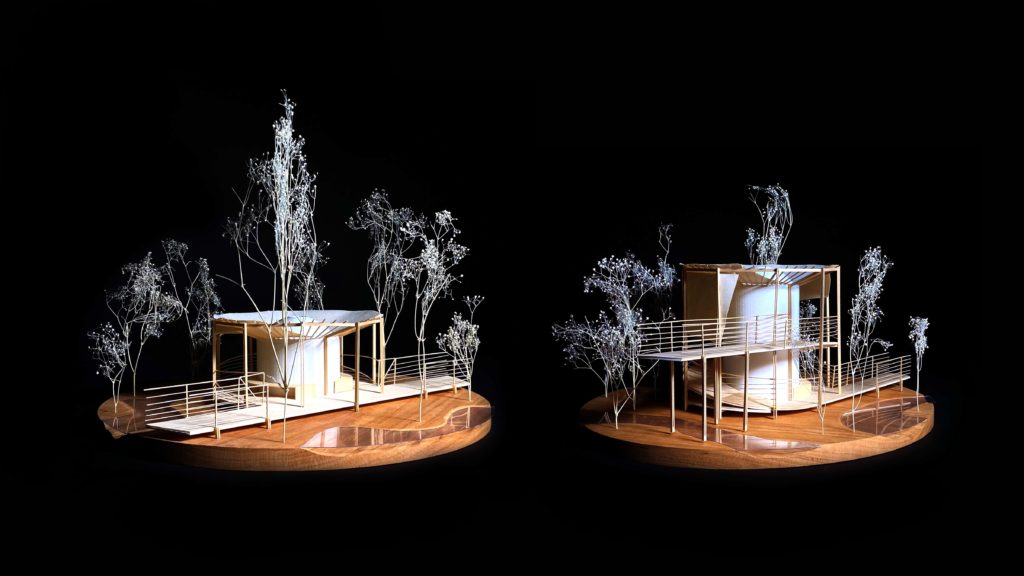
The studio brief begins with story: “Over one hundred and fifty years ago, Henry David Thoreau was introduced to this forest by a Penobscot guide and chronicled his journey in his collection of essays The Maine Woods. At the end of his journey when he asked his guide if he was glad to have returned home, the guide replied, ‘It makes no difference where I am.’ To him, he belonged to the land, and the land did not belong to anyone—a fundamental mindset for living in balance with nature.”
Playing out the architectural implications of this mindset is a central goal of the studio. There don’t appear to be easy solutions. Monson has suffered job losses as local industries have shifted in recent decades, and it is not clear that plugging into Maine’s flow of tourists would revitalize the town. Hikers equip elsewhere, and the area is packed with picturesque locales. With support from the Libra Foundation, a nonprofit organization based in Portland, Mori has instead set up an experiment in symbiosis with Monson Arts, an artists’ and writers’ residency program. “The foundation bought up housing stock that was in decline, renovated them, and started an artists’ and writers’ residency program—bringing in a total of 90 people in the last couple of years,” Mori says. “They have a restaurant and a general store. The foundation previously bought a building in New Gloucester, Maine, which used to be a horrible institution—they called it an institution for the mentally feeble—that really just placed marginalized people in terrible living conditions. The organization renovated the building and converted its program to an agricultural facility.” The question of the studio: How can one intervene in one of the poorest places in New England to attract young people and propose a new and viable economic base?
Tourism is consumption-based—humans going somewhere to take and take and take. We don’t give back and we don’t even think of the symbiosis that’s necessary to sustain human life in the forest.
Monson Arts does draw tourists of a sort, although they are different from those who come to hike. Instead, Monson is being recognized as “a good laboratory for solving the major problem of how to deal with poverty in rural areas in the United States, and how to save towns from obsolescence,” Mori says. “It’s a kick-starter kind of a program. Because of the artists’ residency, people like museum curators and cultural commissioners have been drawn to see what is going on in Monson. Even in the short time we were involved with Monson, we heard of many different organizations coming to see it as an example, perhaps to consider investing.” For Mori, one idea is to “create a new resource for these visitors.” She notes that “the artists themselves are interested in certain types of tourism. They may want to visit the Skowhegan School of Painting & Sculpture or the Maine Organic Farmers and Gardeners Association, the oldest and largest organic farming organization in the country.”
This circulation of people and ideas will hopefully serve the larger goal of connecting people with the Indigenous way of existing on the land. Monson is situated among the lakes and forests alongside the Piscataquis River, which flows into the Penobscot River, along which the present-day Penobscot Nation is located. Before European settlers, the tribe called the vast watershed of the Penobscot River home. “[The Penobscot] have a very different ethos and understanding of engagement with the place where they live,” Mori notes. “Tourism is consumption-based—humans going somewhere to take and take and take. We don’t give back and we don’t even think of the symbiosis that’s necessary to sustain human life in the forest.”
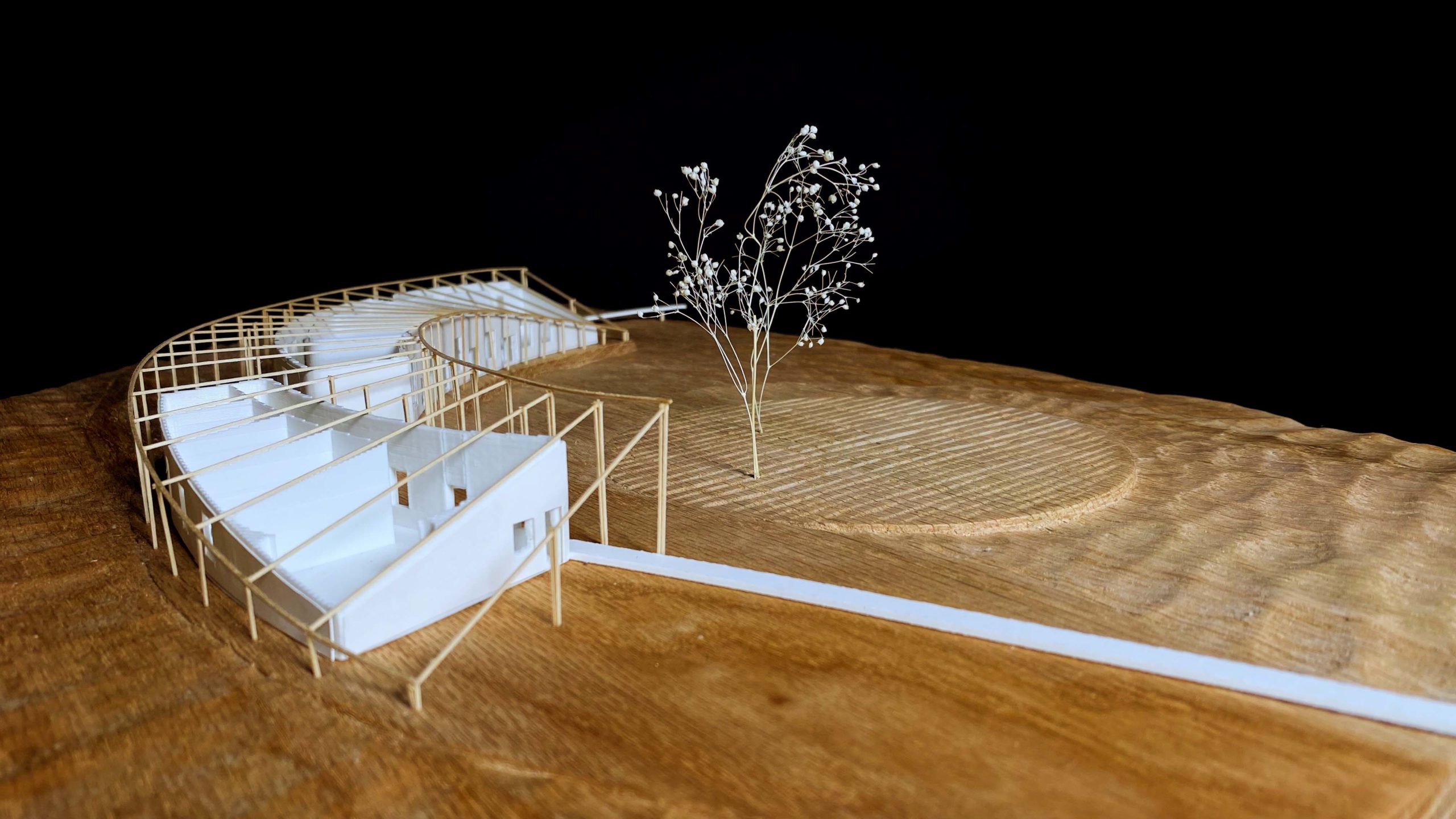
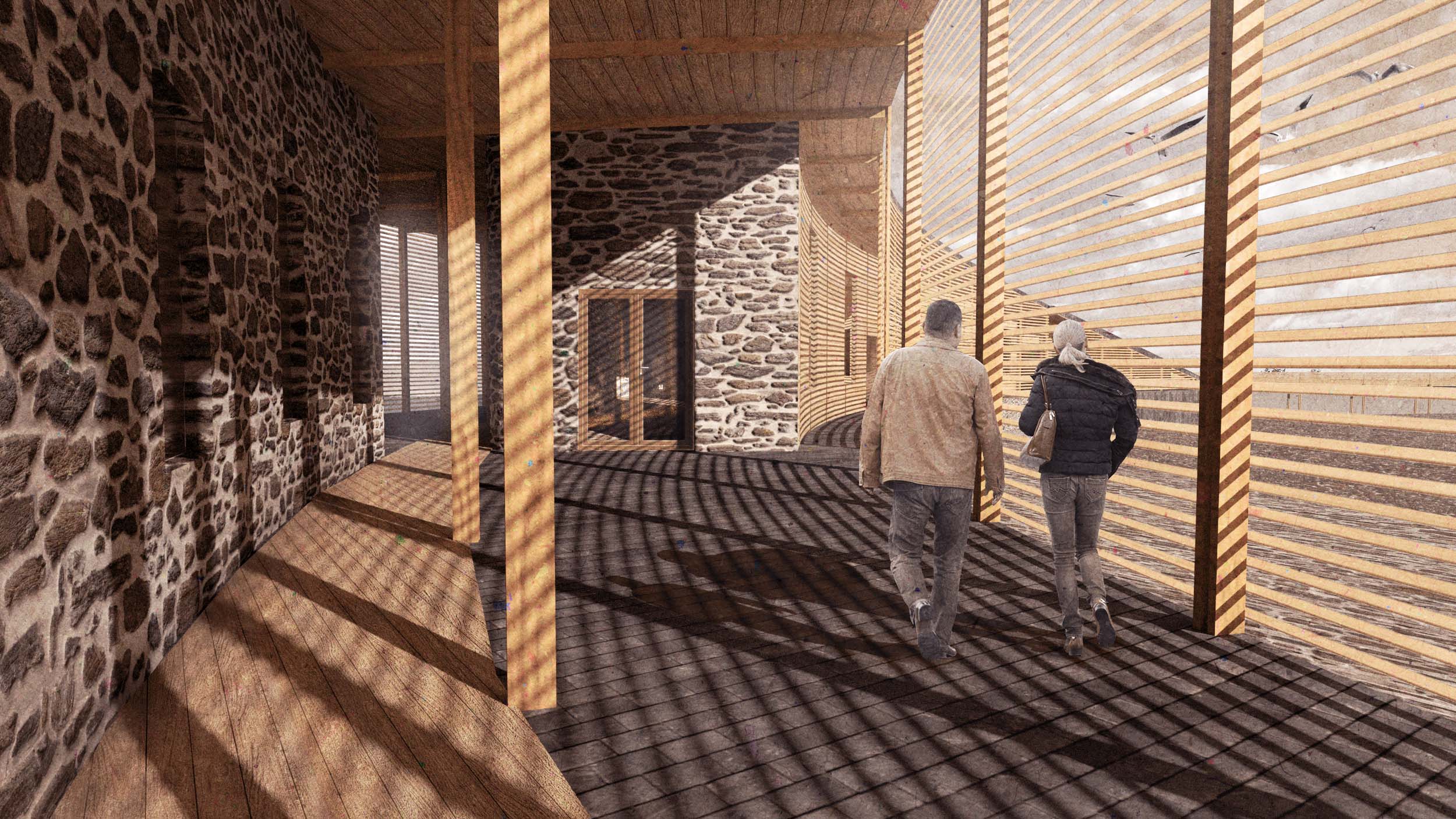
For the studio, Mori invited an ambassador from the Penobscot Nation to speak to the students about their life. “They travel by canoes on the Penobscot River; it’s a survival technique,” she says. “Which season to go to the coast or the river to fish, and when to forage in the forest. In the past they suffered a great deal because they were forbidden to forage in the forest, they were given ration foods, and their lifestyle was completely changed, leading ultimately to a public health crisis.” Fortunately, “They’re slowly gaining back their way of life,” Mori continues. “It depends on respecting land, not exploiting it. They think of the forest and human society in terms of equal coexistence.” This mindset manifests in all sorts of ways, large and small. Some examples came through in a visit to the exhibit of Penobscot birchbark canoes in Harvard’s Peabody Museum around the corner from the GSD. “For the birchbark canoes, there are ways to peel the bark without damaging the trees,” Mori says. “Another idea is that, when harvesting bark, it is better not to harvest from the best trees, but rather from the second best. That way the best trees can continue to sustain younger trees and protect other species. This is a very important piece of Indigenous wisdom.”
When emphasizing the sense of connection with nature, Mori is quick to point out that we should not be misled by simple distinctions between city and wilderness. “I live in New York, and this is our nature,” Mori emphasizes. “This is the place we live. We have to work with an ecosystem of this particular density, with the lives of people collapsed together in this way.” Mori is ultimately pessimistic about the capacity of tourism to allow connections to such wisdom. “In a real analysis, you would see that tourism is a colonial activity,” she says. “We really have to think twice about it. I think climate change is helping people to see this. The pandemic has helped us realize how high the energy consumption of travel is, and how unnecessary it is. Tourism in a city is similar to tourism in nature: people just skim the surface of glamour of a place like New York. But the people who lived through the pandemic in a city really got to understand its true nature and what makes it work. That’s similar in some ways to how Indigenous people live: living with the land, in good times and bad, then not just leaving because it’s not a fun time. Going through different seasons and difficult predicaments and embracing all the circumstances of a place and people—that is very different from the voyeuristic mentality of tourism.”
So, can the mentality of tourism shift? Mori’s conclusion also summarizes the sentiments of her colleagues D’Oca, Neri, and Hu: “Going forward from the pandemic, we have to be very wise and conscientious tourists. To get away from tourism as consumption, we have to be open-minded to learn from other people and their environments.”
[1] “Mogao Caves,” UNESCO [https://whc.unesco.org/en/list/440]. “Ancient City of Ping Yao,” UNESCO [https://whc.unesco.org/en/list/812].
